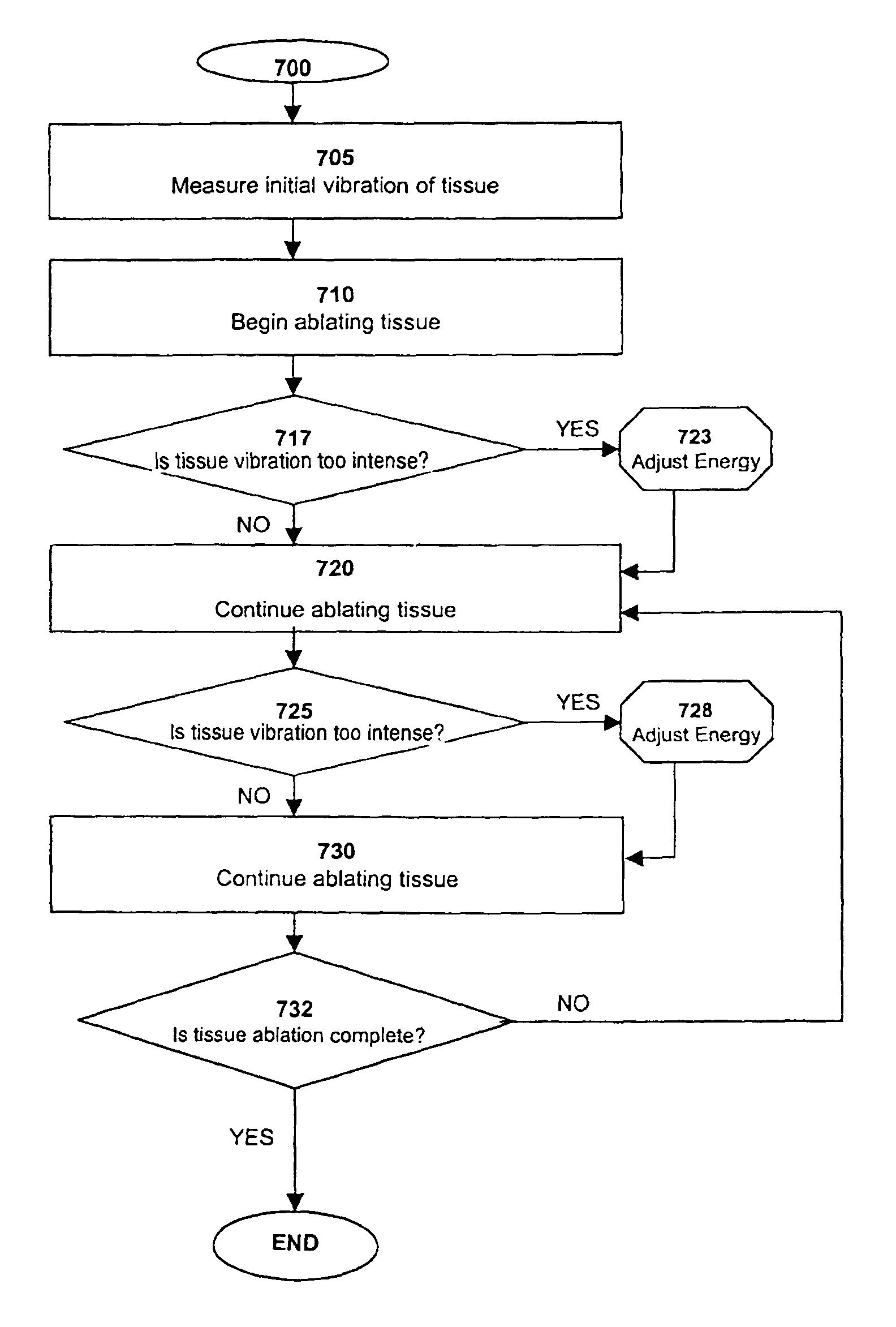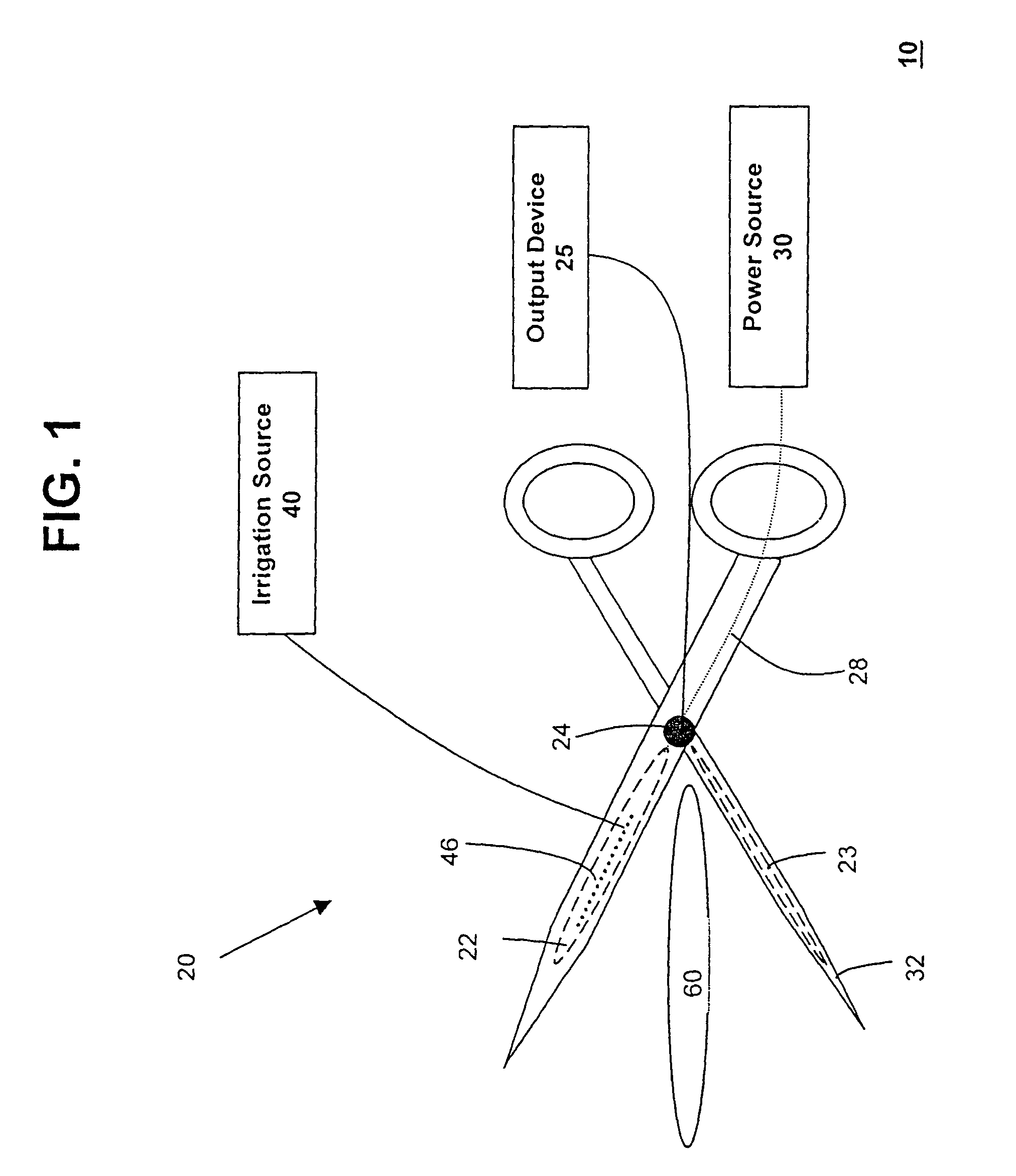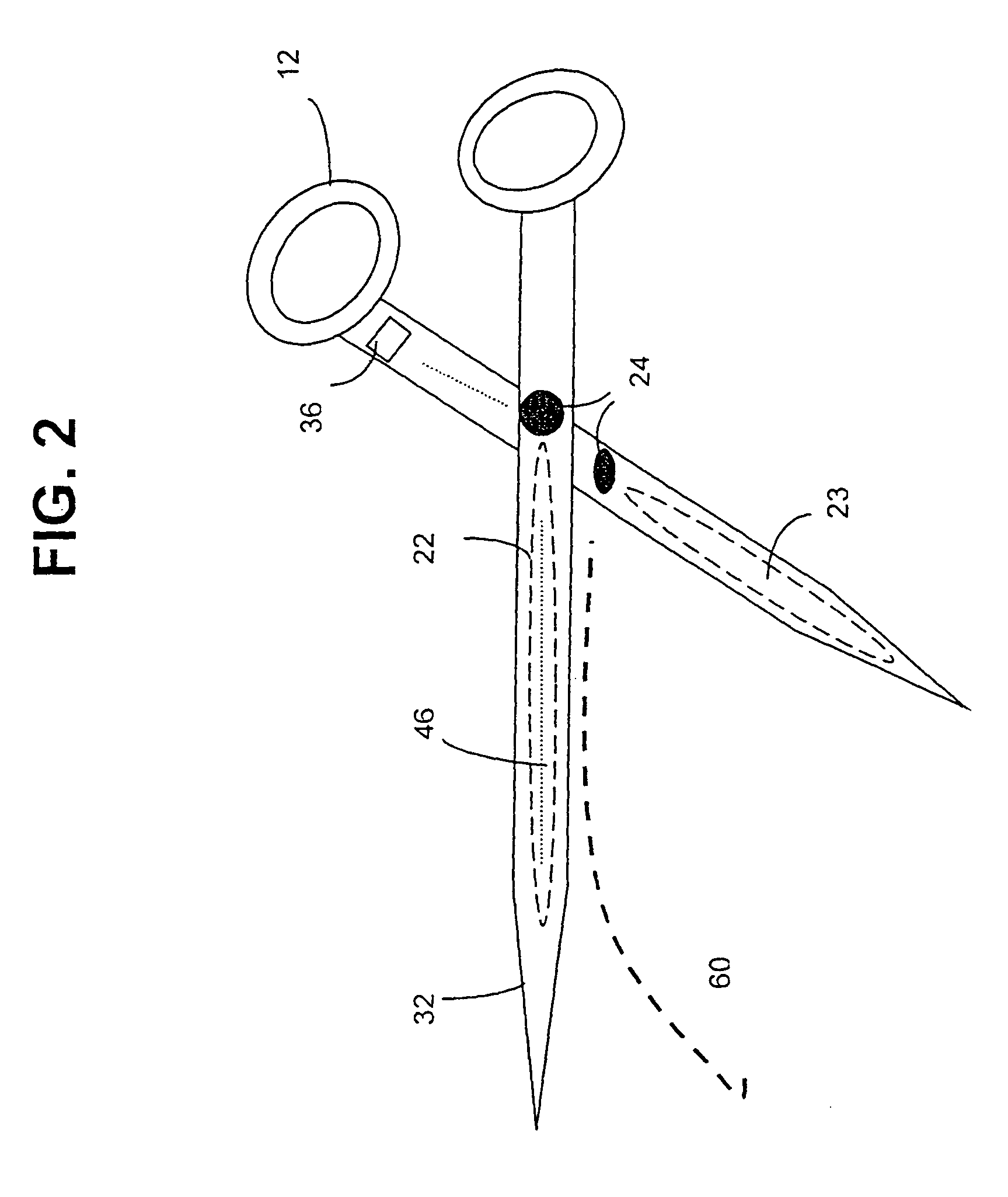Vibration sensitive ablation device and method
a vibration-sensitive, ablation device technology, applied in the field of ablation devices, can solve the problems of non-conductive lesion, blocked electrical pathways within the tissue, and insufficient function of electrical signals
- Summary
- Abstract
- Description
- Claims
- Application Information
AI Technical Summary
Benefits of technology
Problems solved by technology
Method used
Image
Examples
Embodiment Construction
[0025]FIG. 1 shows a system 10 for ablating tissue in accordance with the present invention. Typically the tissue to be ablated may be located within the body cavity, such as the endocardial or epicardial tissue of the heart. Other body organ tissue, such as the liver or lung, may also be ablated using the present invention. System 10 may include an ablation apparatus 20 that comprises a conductive electrode 22, a sensor 24 connected to an output device 25 and a connection 28 to a source of ablation energy. System 10 may further include a power source 30 that provides ablation energy. System 10 may also include an indifferent (non-ablating) electrode 23 which may serve as the return plate for energy transmitted through electrode 22. Electrode 23 may be placed elsewhere on the patient's body than the ablation site. For example, electrode 23 may be placed on the patient's back or thigh. System 10 may further include an irrigation source 40 that provides irrigation fluid to the ablatio...
PUM
| Property | Measurement | Unit |
|---|---|---|
| temperature | aaaaa | aaaaa |
| temperature | aaaaa | aaaaa |
| pressure | aaaaa | aaaaa |
Abstract
Description
Claims
Application Information
 Login to View More
Login to View More - R&D
- Intellectual Property
- Life Sciences
- Materials
- Tech Scout
- Unparalleled Data Quality
- Higher Quality Content
- 60% Fewer Hallucinations
Browse by: Latest US Patents, China's latest patents, Technical Efficacy Thesaurus, Application Domain, Technology Topic, Popular Technical Reports.
© 2025 PatSnap. All rights reserved.Legal|Privacy policy|Modern Slavery Act Transparency Statement|Sitemap|About US| Contact US: help@patsnap.com



